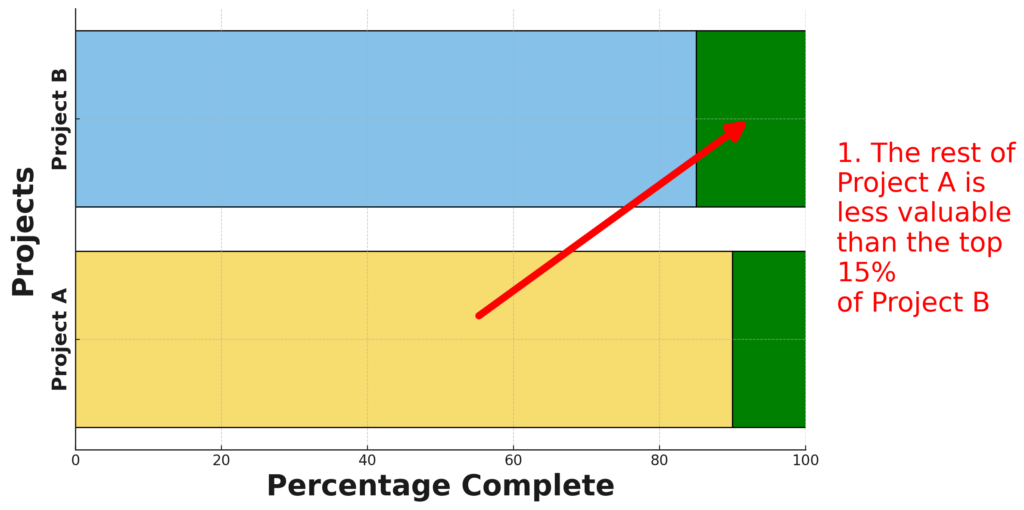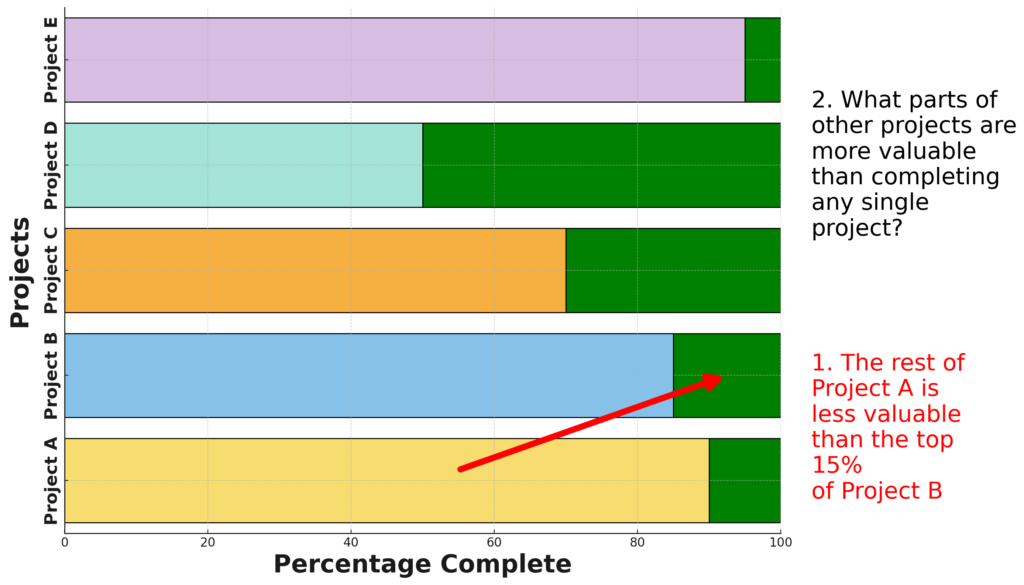Have you ever thought, “If only we had more people, we could get everything done?” If so, you’re not alone. I’ve been getting this question a lot lately, and I’ve got to tell you, it always makes me laugh a bit. Why? Because it’s based on a fundamental misunderstanding of how work actually gets done.
Let’s break this down.
The Impossible Equation
Here’s the reality: there’s an equation at play here, and it’s pretty simple. You have all the stuff you need to get done on one side. On the other side, you have people available to do it. The goal is to balance these two sides.

(Inspired by a friend who seems to be doing laundry 24/7). [Source: AI; DALL-E]
I’ve worked with countless companies and have yet to hear someone say, “Jake, you’ve got to help us! We have so many extra people, and we don’t have enough work for them to do.” (If you’ve experienced this unicorn problem, please let me know in the comments – I’d love to hear about it!)
The Real Solution
So, if hiring more people isn’t the answer, what is? It’s simple but not easy: you need to do less stuff.
I know, I know. It sounds heretical in our “do more, be more” culture. But it’s the truth. If you can’t increase the number of people (or can’t increase it enough), you have to decrease the amount of work.
This means making tough choices, prioritizing ruthlessly, and saying “no” to good ideas so you can say “yes” to great ones.
One more critical thing: When I said ‘you need to do less stuff,’ I meant that you must stop pretending that work with a status of ‘in progress’ is actually getting done!
Breaking Down the Work
One of the biggest challenges I see is that many companies approve work in chunks that are too large. They’ll greenlight entire projects or feature sets, ending up with 10, 15, or 20 large initiatives all ‘running’ (but not really) simultaneously.
The result? Teams work on a little bit of everything, making 2% progress here and 6% progress there but never actually finishing anything. It’s like trying to drive multiple cars down a highway at once – you might move each one a little bit, but you’re not getting anywhere fast.
Instead, try breaking work down into smaller, more manageable pieces. Maybe you only need 5% of that big project right now. Perhaps it’s 20%. Use something like the Pareto principle (the 80-20 rule) to focus on the 20% that will deliver 80% of the value.
Prioritizing Across Projects
This is where things get interesting (and, admittedly, a bit complicated or even complex). Sometimes, even 20% is too much. You might need to complete 10% of Project A and then switch to Project B because the top 15% of Project B is more valuable than the rest of Project A (see Figure 1).

Then, consider what parts of other projects are more valuable than the rest of Project A or B? [Figure 2 #2]. You might find that the top 30% of Project C is more valuable than the rest of Project A or B, and so on.
It sounds challenging, and it is, but it comes down to this: what features or benefits in each piece of work will add the most value? Focus on delivering those, regardless of which “project” they belong to.

Having the Hard Conversations
I won’t sugarcoat it: this approach requires some very tough conversations. You’ll need to talk to stakeholders, team members, and everyone involved about the fact that you can’t do everything. You’ll need to explain why you’re focusing on certain things, not others.
This also requires that you stop setting a date for an entire project and instead start to look at the highest value in each and focus on that first! This might even cause you to consider options to organize and budget work based on products instead of projects.
These conversations aren’t easy, but they’re necessary. Remember, the alternative is pretending that everything’s in progress—and that means you’re going to move really, really slowly (or not at all) on everything.
The Bottom Line
You might never feel like you’re “ahead” or have “enough” people. But by focusing on less, you can actually deliver more effectively! More importantly, you’ll know you’re working on the most valuable stuff.
Remember, the goal isn’t, hopefully, to pretend to be doing everything. It’s to do the right things, the things that matter most. So, the next time you find yourself wishing for more people, step back and ask: What if we complete the work we can with the people we have and stop pretending? What if you start to make Transparent Business Decisions?
What about you? How do you handle your organization’s “not enough people” problem? Have you found effective ways to prioritize and focus? Share your experiences in the comments.








